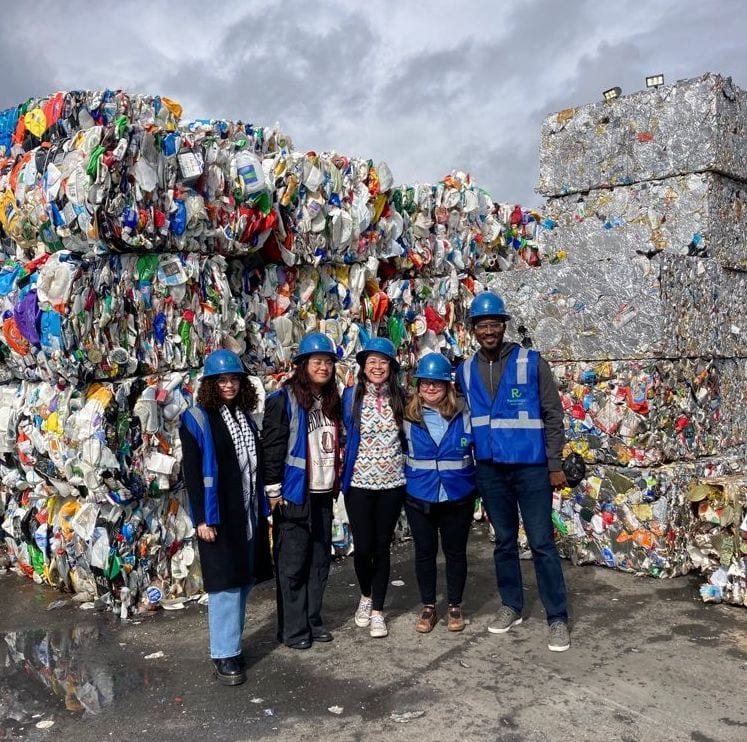
This Spring’s MSEM Special Topics course focused on Waste Management culminated in a visit to Recology’s new Material Recovery Facility (MRF) in Santa Rosa. The facility opened in January 2024 and reflects industry efforts to shift from traditional waste management to resource recovery.
This focus on pursuing a world without waste was central to the course – taught by Teresa Bradley (MSEM ‘12), who’s founder and CEO of Race to Zero Waste, a nonprofit organization devoted to educating individuals on zero waste principles and simple actions through reuse, source reduction, re-earth, and avoidance of single-use plastics. Throughout the term, students in this course learned about different types, sources, and proportions of municipal solid waste (MSW) generated on a local, state, and national level – with an emphasis on methods of disposal, recycling, and waste avoidance.

Topical waste-related policy initiatives such as Sustainable Materials Management, Zero Waste Initiatives, Household Hazardous Waste, and Extended Producer Responsibility were also discussed during the 8-week class. Students learned to look through the lens of Sustainable Materials Management hierarchy and principles of refuse, recovery, redesign, repurchasing, and rethought.

While on-site at the new MRF, students learned about zero waste community education programs as well as the innovative technology central to the new Recology facility, which processes mixed recyclables from 13 communities in Sonoma and Marin counties. It is predicted to achieve a recovery rate of 85%, and has the capacity to process 400 tons per day using seven optical sorters, infrared light, and air nozzles to sort materials and remove contaminants.






